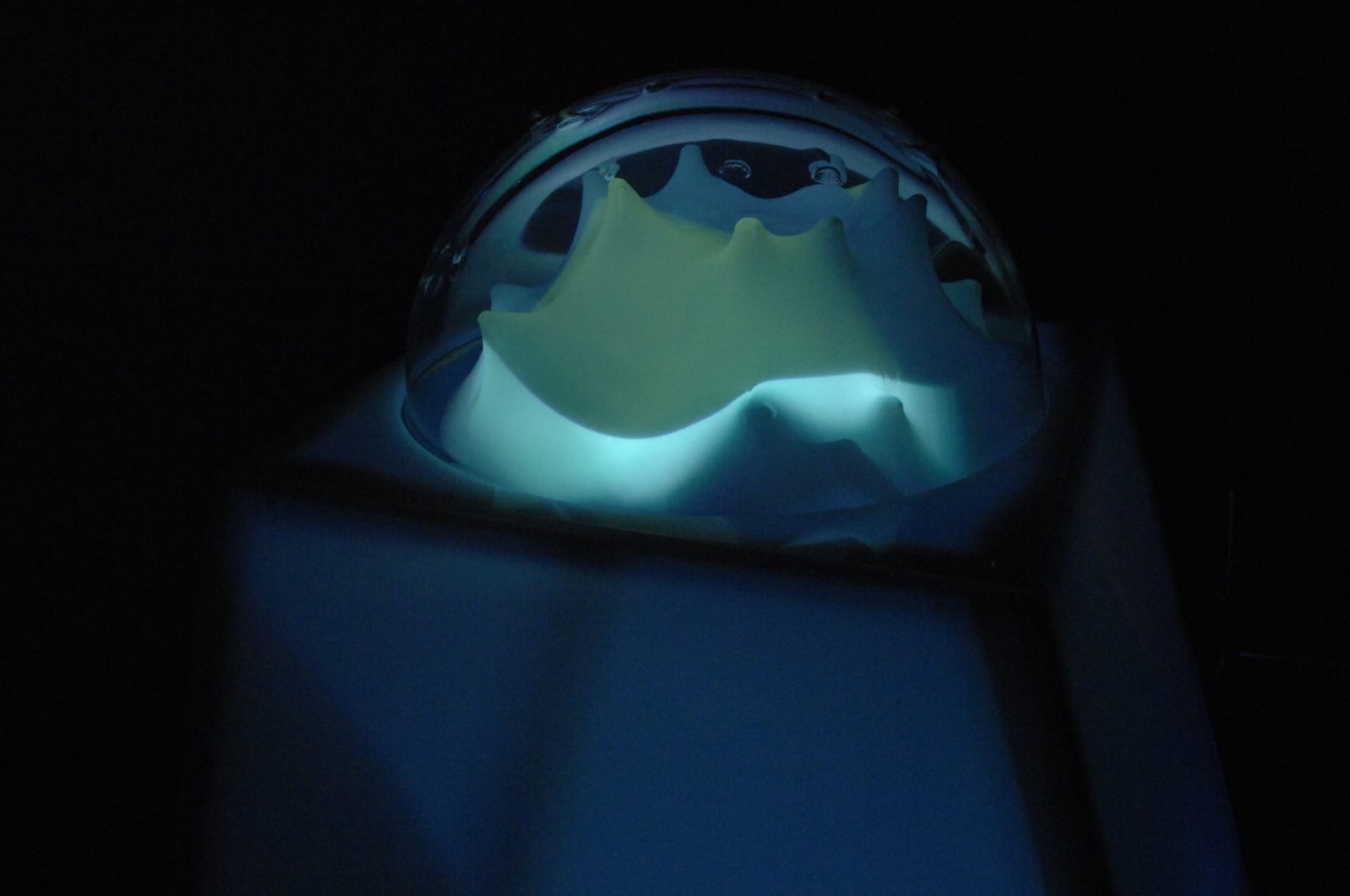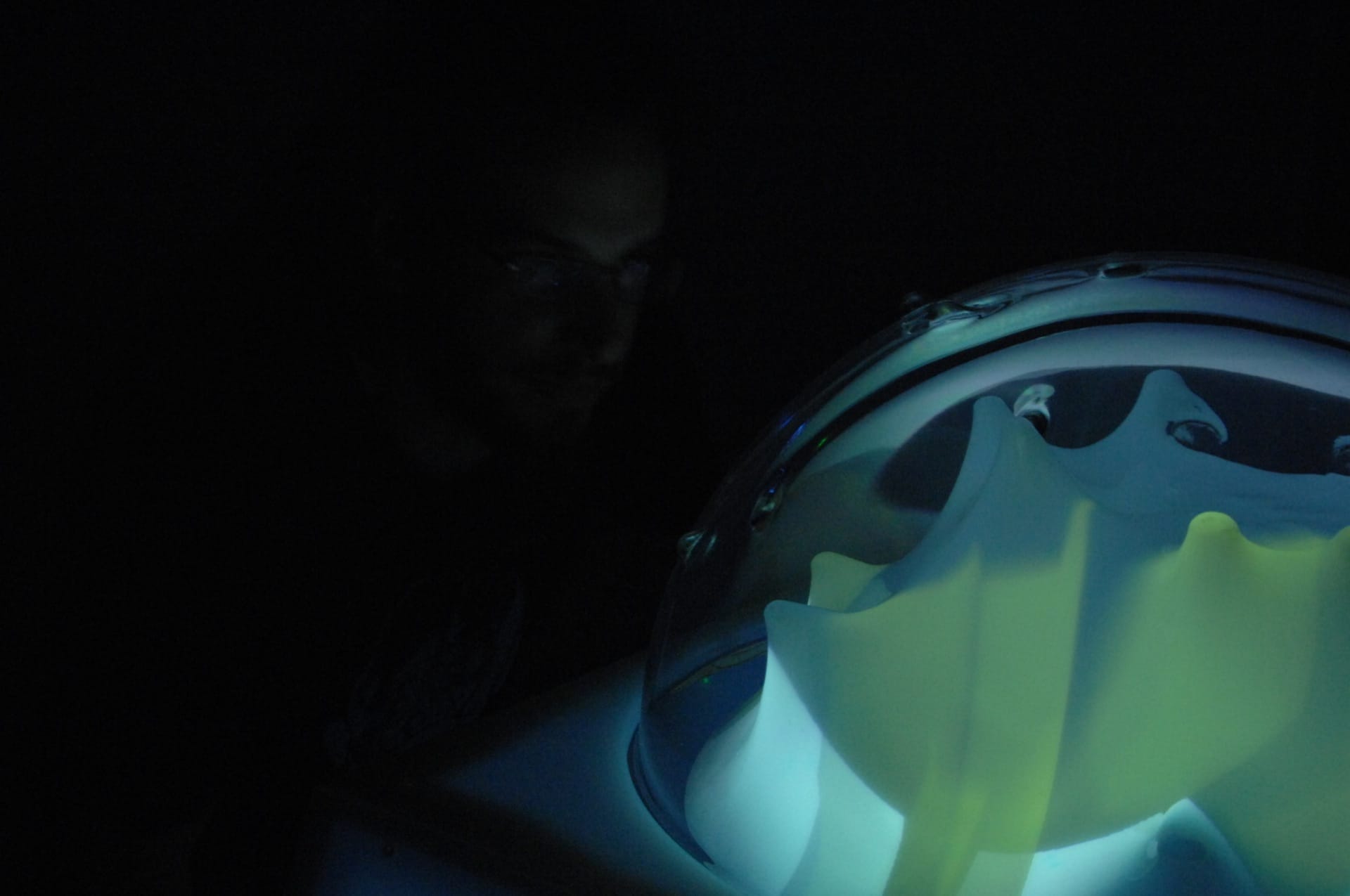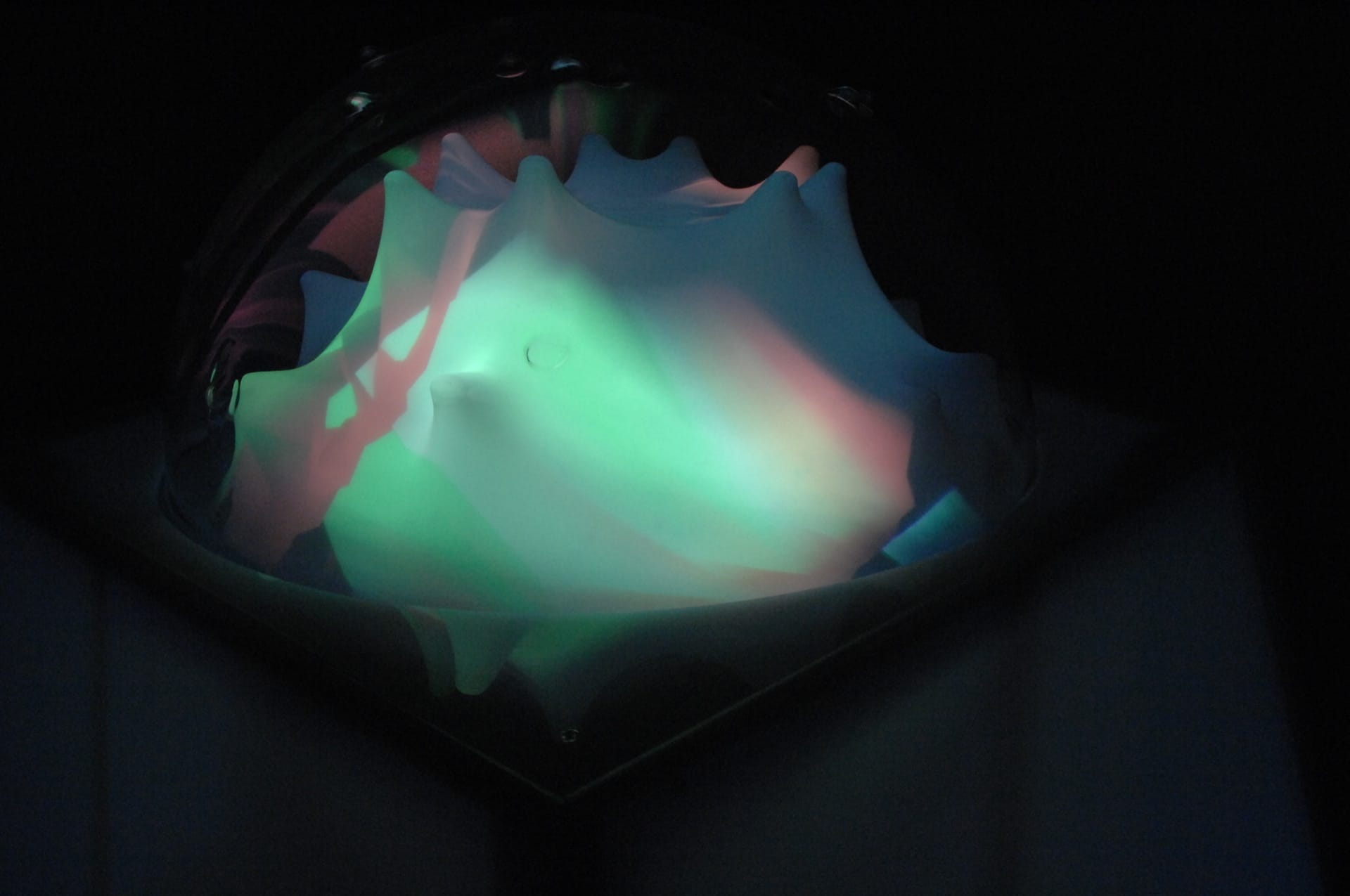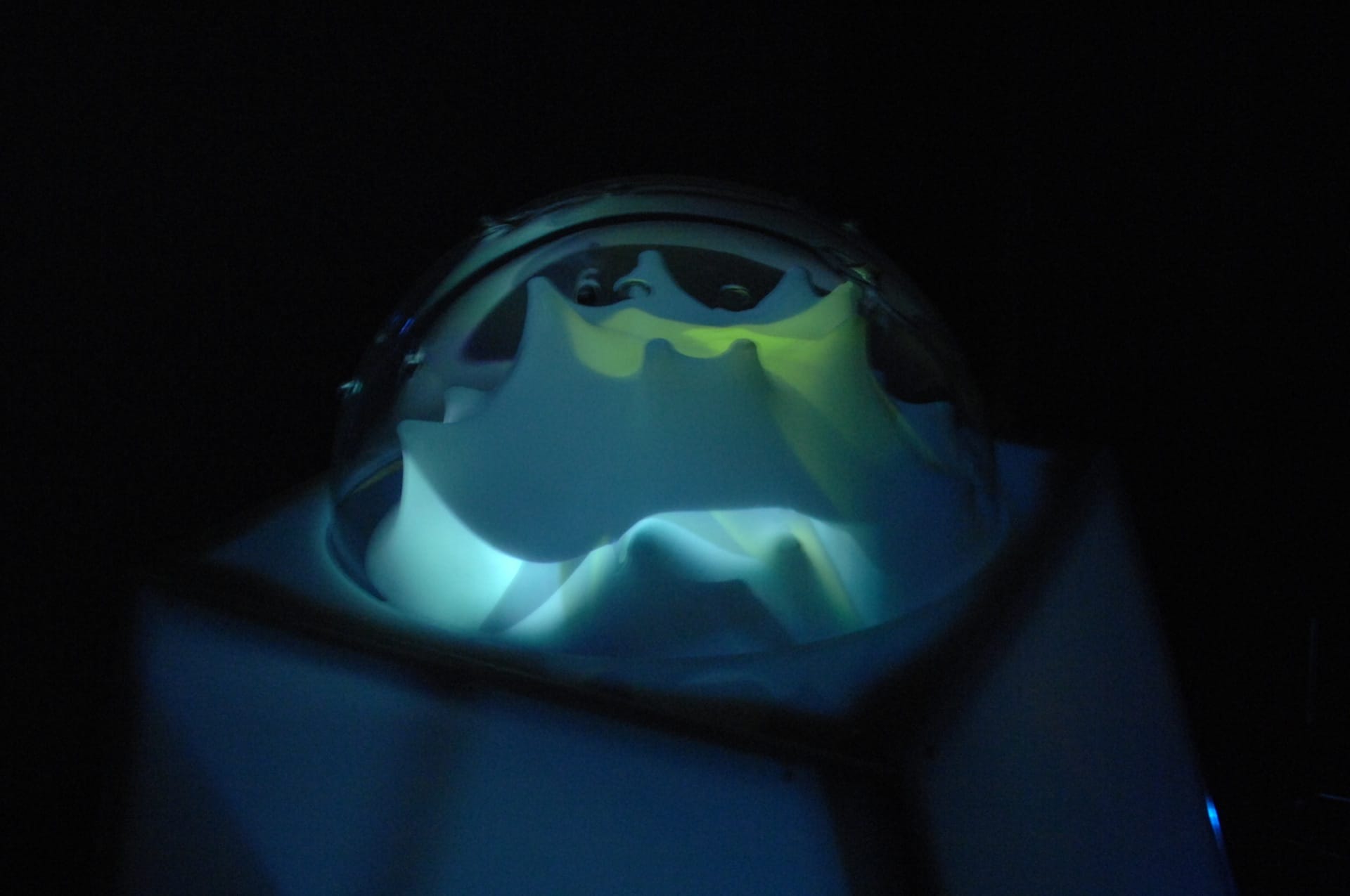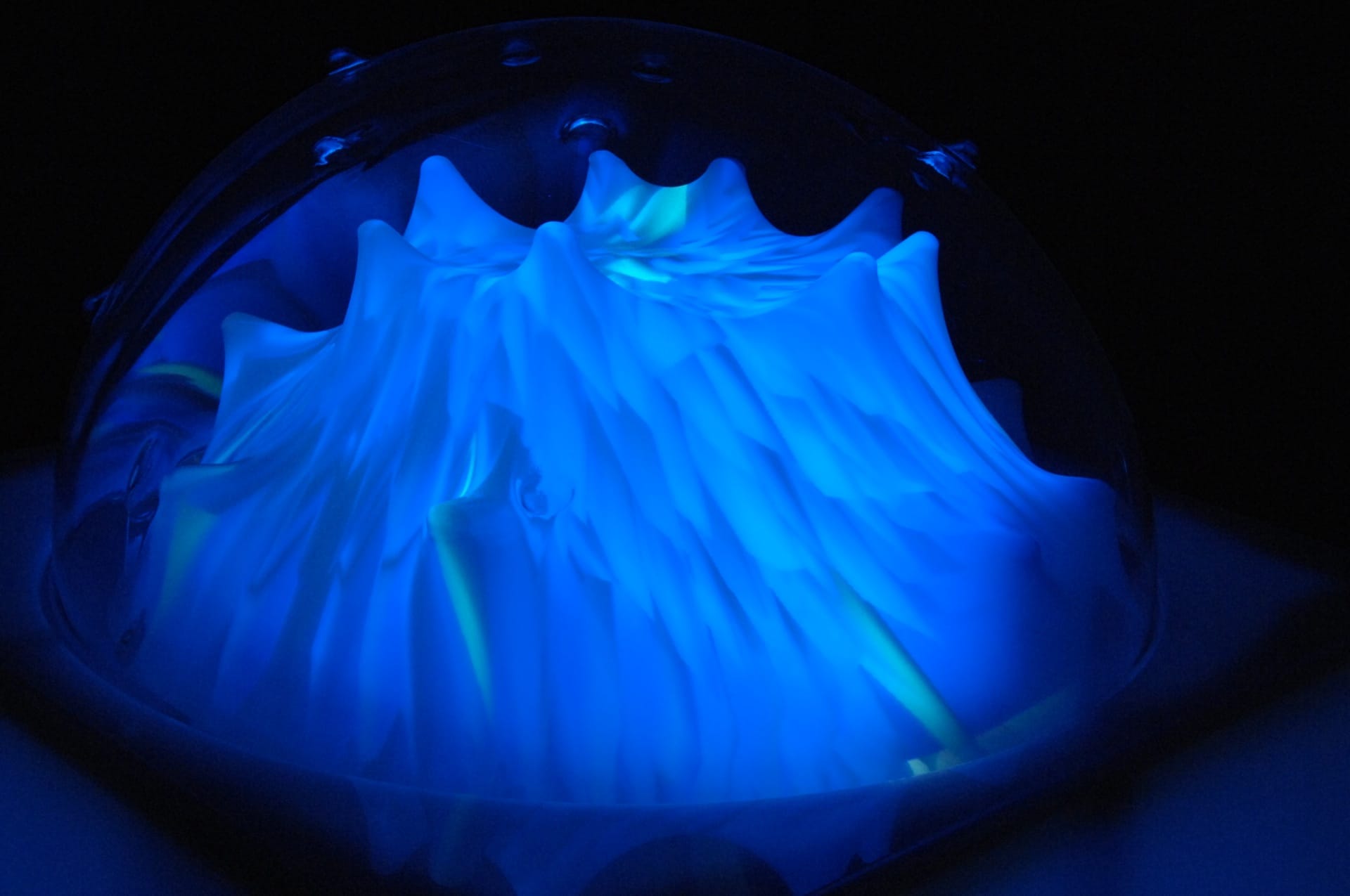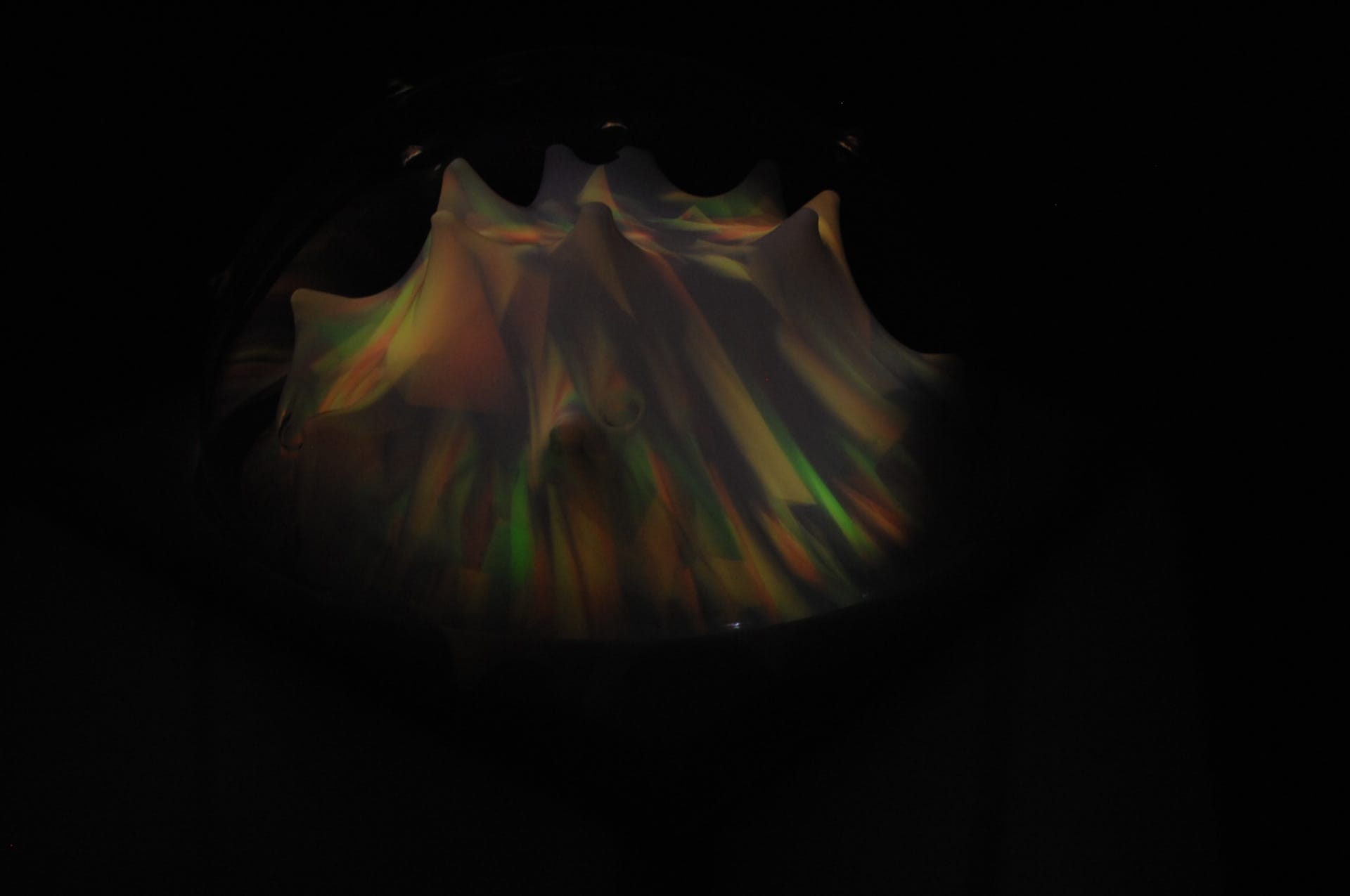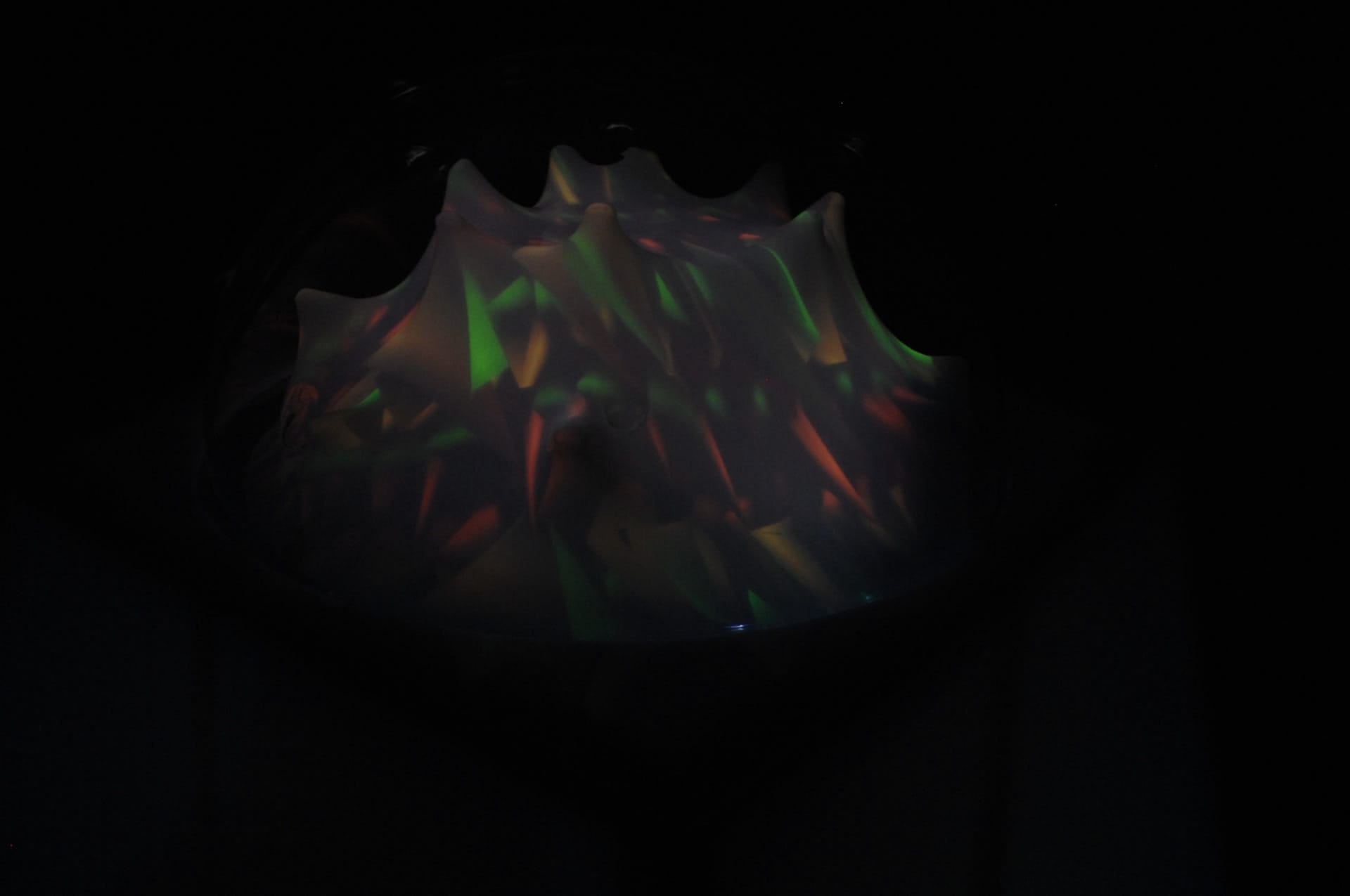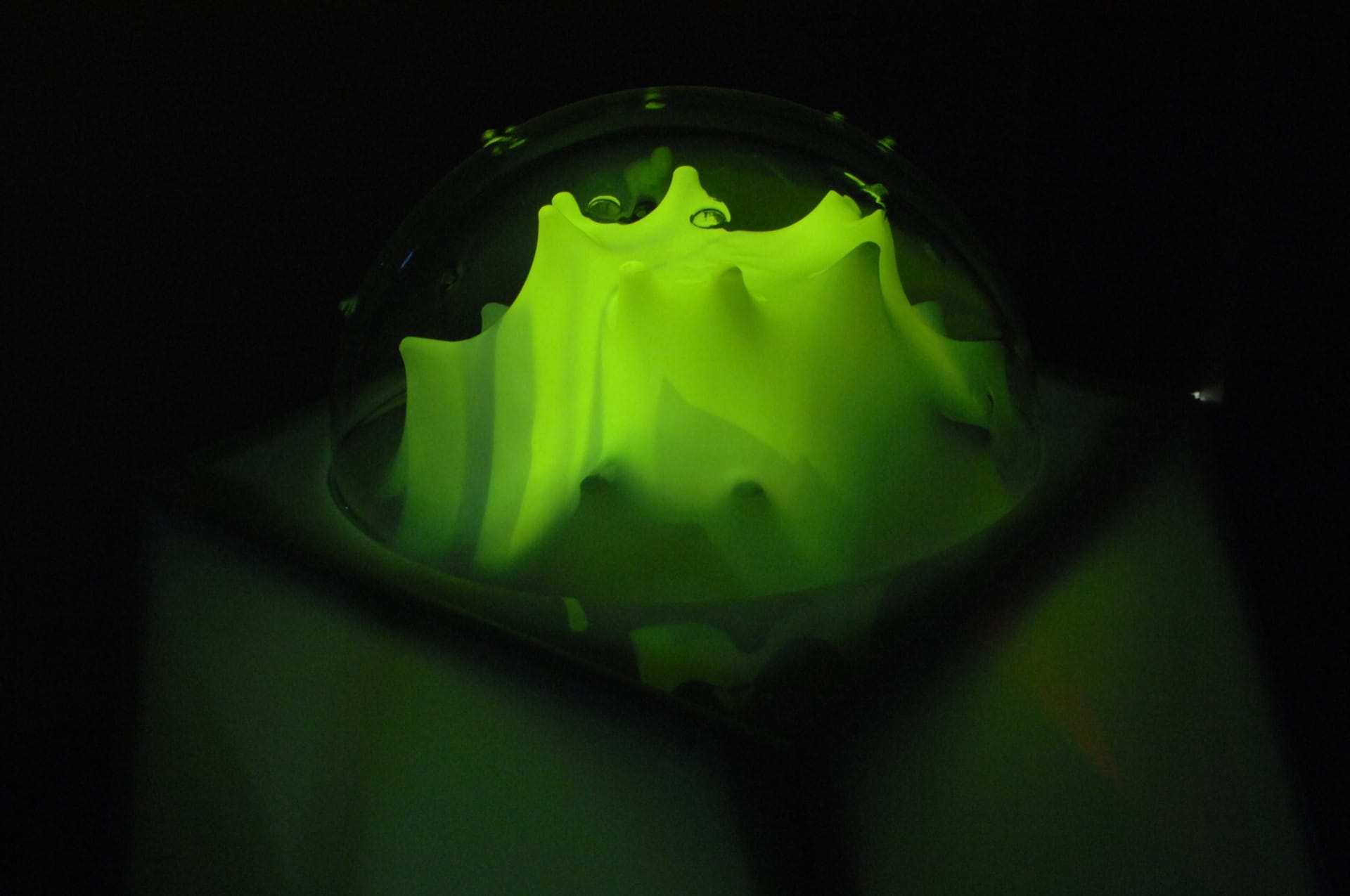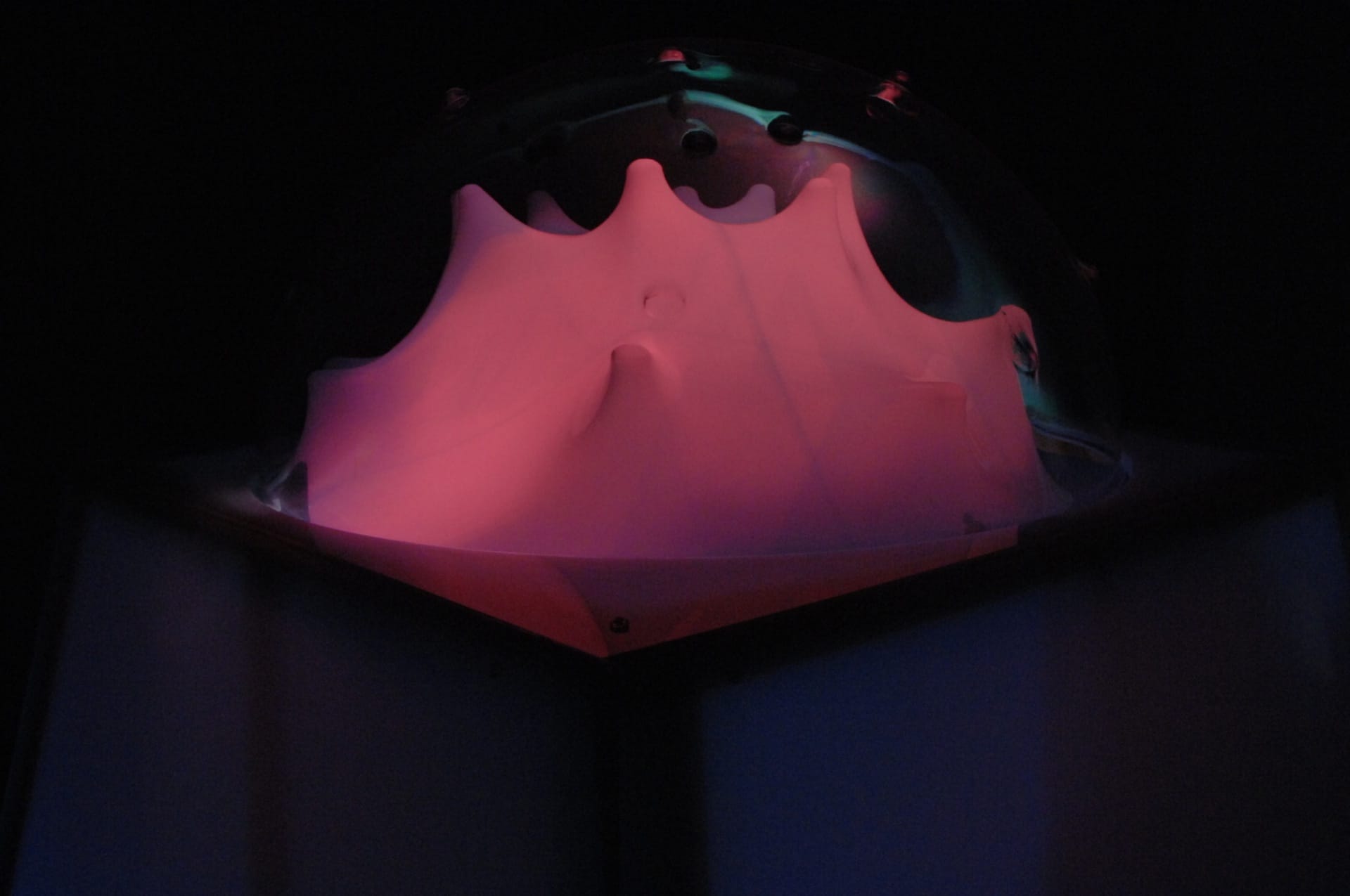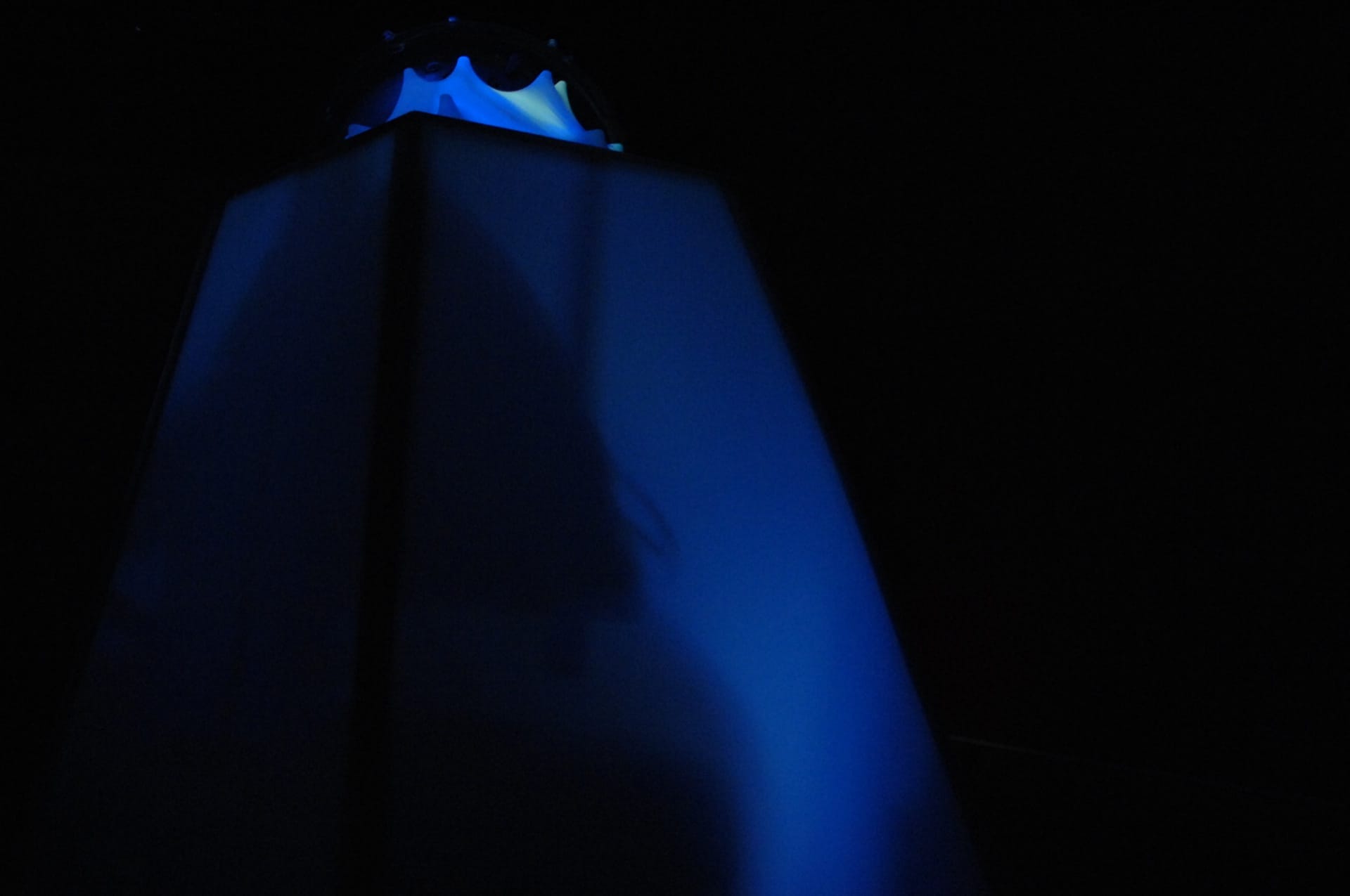interactive kinetic sculpture
–
![]()
“Above the pediment
sang Golden Charmers”
Pindaros (522-443BC); unknown lost poem, describing Apollo’s mythical temple;
cited in Pausanias, Desription of Greece [book X.5.5], 2nd century AD
The original Keledónes (a compound word in ancient greek which literally means ‘those who sing beautifully’) were soothing creatures endowed with magical singing powers – much like the more famous Sirenes except they were automata, not living beings. Hephaistos was said to have crafted them in gold for the second mythical temple of Apollon at Delphoi. These statues would begin to sing when they sensed that pilgrims were close to them, luring them to stay eternally at the temple, causing them to forget everything about their families and previous lives through their song.
Keledón (pronounced /kilidón/) is an interactive kinetic sculpture from vacuum-formed polyethylene, CNC-cut acrylic, plexiglas and wood, with generative audio, video and light projected from within its body. It is an automaton conceived and modeled algorithmically as a living creature, its visual form inspired by deep-sea bio-illuminescent jellyfish. Keledón is meant to be presented by itself inside a large, dark, closed, empty room, where the only light and sound source is the sculpture.
Keledón is modeled as an open cybernetic system that consists of four parts: aural, visual, kinesthetic and sensory. These components are interconnected through a serial feedback network, in which the audio projection controls the video, the video projection controls the mechanical movement, and the mechanical movement controls the audio, and so forth. The output of each component of the system (audio, video, mechanics and visitor movement) is analyzed to deduce how smooth or erratic the behavior of each component is. Erratic behaviors will slowly move from one component to the next through the feedback loop, thus causing the whole system to destabilize before finding a new balance. Practically, this means that when alone, Kelédon will be calm, but when it senses people moving around it, it will try to charm them with its best ‘song’, ‘dance’, and dynamic illumination.
| Year: | 2009 |
| Type: | Interactive kinetic sculpture |
| Description: | Distributed, micro-telematic, interactive sound art installation |
| Dimensions: | (W) 95cm * (D) 80cm * (H) 125cm |
| Duration: | Variable |
| Capacity: | Variable |
| Materials/Media: | Polyethylene, acrylic, plexiglas, wood Video; RGB lights; sound; stepper motor; computer; arduino micro-controller; ultra-sound sensors, 3D accelerometer; video projector; 2 speakers, audio interface, contact microphone; software |
| Software: | Max/MSP/Jitter, Arduino, G-code |
| Photo credit: | Philomene Longpré |
State Diagram

Acknowledgements
The sculpture and the system was fabricated and developed in the Center for Digital Arts and Experimental Media (DXARTS) in spring 2009. Many thanks to Tivon Rice for his advice and help, and to James Coupe for his feedback.
